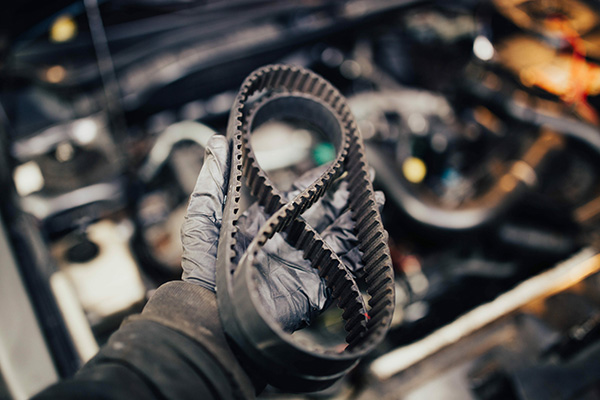
Replacing a timing belt is one of the most important maintenance tasks for many vehicles. It’s a job that typically comes up between 60,000 and 100,000 miles, depending on the manufacturer’s recommendation. But when the time comes to change the belt, there’s more to consider than just the belt itself.
Replacing the timing belt without addressing related components can lead to costly problems later. That’s because these surrounding parts work in tandem with the belt, and if one fails after the belt is replaced, you’re stuck paying for labor all over again.
Let’s take a closer look at which components should be replaced during a timing belt service and why it matters.
The Timing Belt’s Role in Your Engine
The timing belt coordinates the rotation of your engine’s camshaft and crankshaft. This precise synchronization ensures that your engine’s valves open and close at exactly the right time in relation to the pistons. If the belt slips or breaks, it can throw the engine’s timing off and, in many engines, cause serious internal damage.
Because of the critical nature of this part, timing belts are made to be tough, but they’re not designed to last forever. When they do wear out, the risk of engine failure increases sharply.
Water Pump: Always Worth Replacing
The water pump is almost always driven by the timing belt in engines where they’re located in the same housing. That means if the pump fails after you’ve already replaced the timing belt, you’ll need to take everything apart again, costing just as much in labor a second time.
Even if your current water pump isn’t leaking or noisy, it’s still smart to replace it during a timing belt service. Pumps have a similar service life to timing belts, so they’re often near the end of their lifespan at the same mileage interval. A new pump helps ensure continued cooling system reliability.
Timing Belt Tensioner and Idler Pulleys
The belt is kept in position by a set of pulleys and a tensioner, which may be hydraulic or spring-loaded. These parts allow the belt to maintain the proper tension and route. If the tensioner or pulleys are worn, they can create slack in the belt or cause it to jump a tooth on the sprocket, affecting the engine’s timing.
Replacing these components, along with the belt, helps avoid uneven wear, vibrations, or premature belt failure. If any of these parts seize, they can shred a brand-new timing belt in seconds.
Camshaft and Crankshaft Seals
These small but essential seals are located around the shafts that the timing belt connects to. Over time, they can dry out and begin to leak oil into the timing belt area. Oil contamination weakens the rubber belt and can lead to failure.
Replacing the camshaft and crankshaft seals while the belt is off is a cost-effective way to prevent future leaks and protect your investment. Once the new belt is installed, reaching these seals again would require redoing all that labor.
Drive Belts for Accessories
In many cases, other belts that power accessories like the alternator, power steering pump, or air conditioning are removed to access the timing belt. These drive belts are typically made of the same material and wear out at a similar pace.
Replacing them while they’re already off the vehicle is a simple, low-cost add-on that helps avoid future noise or failure. Cracked or brittle belts can cause problems you can easily avoid during this service.
Thermostat: Consider Replacing for Preventative Maintenance
The thermostat controls the flow of coolant through the engine and can be replaced while the cooling system is open during a water pump swap. Though not always necessary, replacing the thermostat is smart if you’ve experienced overheating, erratic temperature readings, or if your car has high mileage.
If the thermostat fails down the road, you’ll need to drain the coolant again and perform extra labor that could have been avoided.
Why Bundling These Parts Saves Money
The real savings comes from labor. Since replacing a timing belt requires the removal of several engine components, doing all related work at the same time means you only pay for labor once. It’s more efficient, less disruptive, and helps prevent future problems from arising in the same area of the engine.
Ignoring the surrounding components may seem cheaper now, but it increases the risk of breakdowns, leaks, or further engine damage later. Think of it as comprehensive maintenance, not just a belt swap.
Full Timing Belt Service in Marina del Rey, CA
At Villa Marina Auto Care in Marina del Rey, CA, we go beyond basic timing belt replacement. Our technicians inspect and replace all critical components during service, including the water pump, tensioner, seals, and related belts. That way, you drive away with confidence knowing your engine is protected for the long haul.
Book your appointment today and let us help you stay ahead of costly engine repairs.